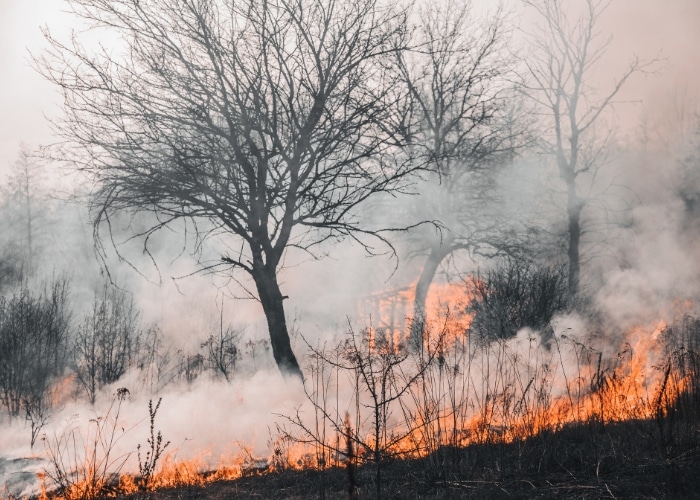
As our changing climate drives an increase in the frequency and intensity of natural disasters in Australia, the aged care sector is facing unprecedented challenges, and ensuring the resilience and adaptability of aged care facilities has become an urgent priority.
From bushfires and floods to severe storms, heatwaves and pandemics, these events pose significant risks to the health, safety and well-being of residents and staff, as well as business continuity, infrastructure and commercial risk to facility operators.
Vulnerability of aged care facilities
From natural disasters to health emergencies, the vulnerability of aged care facilities to various risks has become a growing concern. The COVID-19 pandemic, Black Summer bushfires, and 2022 La Nina floods have highlighted the vulnerabilities within this sector, and underscored the importance of better planning, preparation and response coordination required to protect people, communities, businesses and economies.
Within residential aged care organisations, safeguarding the health and safety of residents and staff, as well as protecting business interests and assets, constitutes critical responsibilities for governing boards, company directors, CEOs and senior managers. The weight of these responsibilities lies in making informed decisions about how the service will react when faced with potential or actual hazards impacting the facility.
Emergency and disaster readiness can be the decisive factor between responding to threats to life and property. It involves the ability to make well-considered choices on how to respond to hazards, taking into account the unique circumstances and local context of each residential aged care facility.
Equally crucial is equipping staff to respond confidently and effectively, especially since the presence of emergency services cannot always be guaranteed during a rapid-onset incident.
An operational level understanding of how to respond to all hazards is essential for aged care facilities to ensure comprehensive preparedness, timely response, employee safety, resident care, regulatory compliance and reputation management. It forms the foundation for a resilient and proactive approach to managing risks and safeguarding the well-being of residents and staff.
Operational challenges during disasters
Natural disasters severely strain aged care facilities, presenting challenges such as:
- Evacuations and relocations. Moving residents safely requires specialised vehicles, medical equipment and substantial staffing. Effective coordination with emergency services and temporary relocation arrangements demands meticulous planning.
- Supply chain disruptions. Access to essentials like food, medication and laundry services can be interrupted. Facilities must stockpile supplies and establish contingency plans to mitigate disruptions.
- Staffing strain. Staff may face personal challenges, such as evacuating their own homes, leading to workforce shortages. Remaining employees often grapple with increased workloads, risking burnout and poor decision-making.
- Infrastructure damage. Power outages, water shortages and structural damage can jeopardise resident safety and service continuity.
Health impacts on residents
Natural disasters exacerbate residents’ physical and psychological vulnerabilities. Extreme weather can worsen chronic health conditions, while the stress of displacement or experiencing disasters may trigger anxiety, depression or cognitive decline.
The role of preparedness and resilience
Proactive disaster preparedness is essential for mitigating risks. Key strategies include:
- Developing comprehensive emergency plans. Facilities should establish detailed emergency response plans tailored to the specific types of disasters they may face and the specifics of the local geography and emergency services response capability.
- Investing in resilient infrastructure. Strengthening buildings to withstand extreme weather, installing redundant power, and ensuring access to sufficient supplies to sustain isolation periods are critical measures for disaster resilience.
- Staff training and support. Regular training and simulations on emergency response procedures are essential for staff. Providing mental health support to both staff and residents during and after disasters can also help mitigate the psychological toll.
- Engaging with the community. Collaboration with local governments, emergency services and community organisations can enhance preparedness and ensure a coordinated response during disasters.
Government and industry support
Addressing these challenges requires collaboration between the government, industry bodies and aged care providers. Increased funding for disaster preparedness and resilience-building initiatives is crucial. Regulatory frameworks should prioritise emergency planning and resilience to support the sector’s ability to navigate crises.
Be prepared
The events of our recent past highlight the urgent need for a proactive approach to disaster preparedness and resilience, which should begin well ahead of the bushfire and flood seasons.
By prioritising the safety and well-being of residents and investing in infrastructure and training, aged care providers can better navigate the complex challenges posed by a changing climate.
Engaging external support to help you develop a plan tailored to your unique conditions and resident cohort can relieve a lot of the burden and ensure you are in the best position should your facility be impacted by a natural disaster.
Respond Global stands ready to support aged care providers with your disaster planning and management – to help you ensure aged care residents receive the care and protection they need in times of crisis.
Scott Wilson
DirectorDisaster Management & Environmental Services, Respond Global respondglobal.com